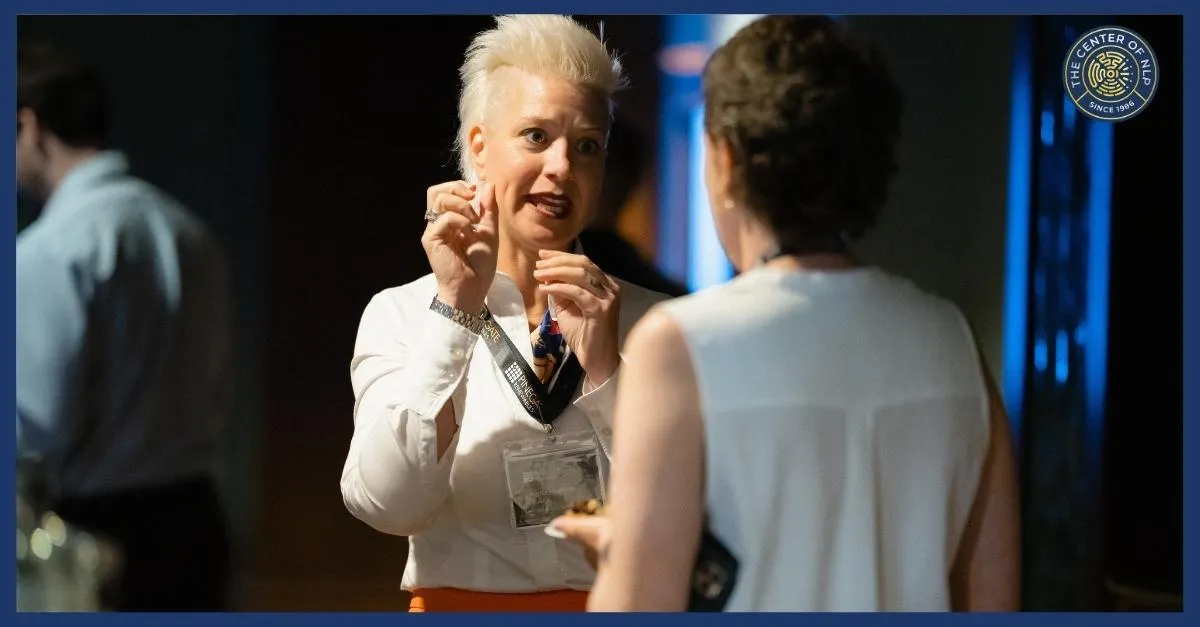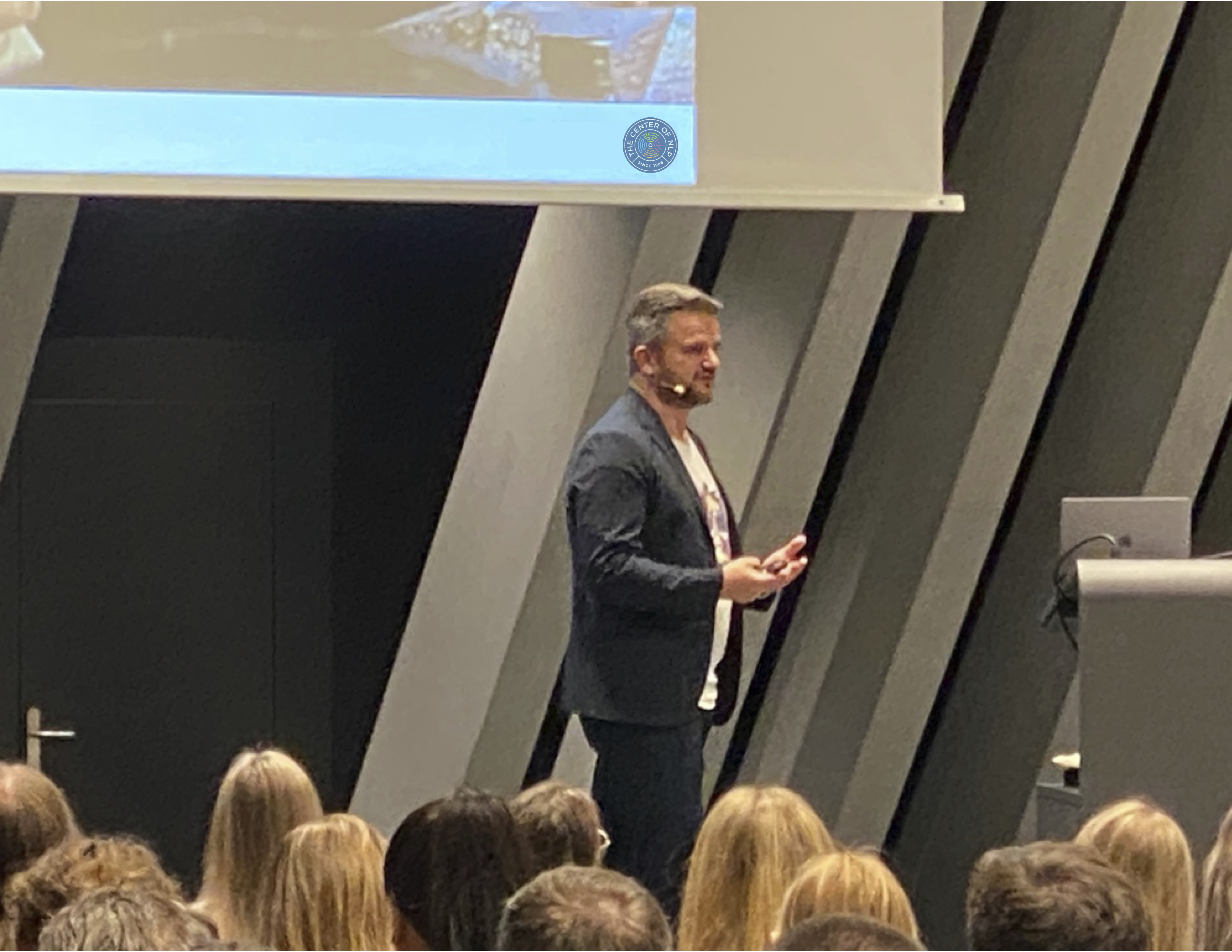
10 Hidden Language Tricks That Shift Any Conversation in Your Favour
In this world where effective communication is the cornerstone of success, the art of connection becomes paramount. Unlocking the door to enhanced interactions lies in understanding and applying Neuro-Linguistic Programming (NLP) techniques. These 10 powerful NLP strategies are not just communication tools; they are keys that open the gates to more profound understanding, richer connections, and heightened influence.
Join us on a journey to explore, adapt, and master these techniques, as we delve into the intricacies of NLP, unlocking a treasure trove of skills to elevate your interactions to new heights. Welcome to the realm where communication transcends words, and connection becomes an art form. Now, we'll explore 10 impactful NLP techniques, each designed to elevate your communication prowess and foster stronger, more meaningful connections.
Navigating the Communication Landscape with NLP
Navigating the communication landscape with NLP Techniques is like embarking on a journey where words become a compass. In this transformative experience, Neuro-Linguistic Programming unveils the subtleties of effective communication—emphasizing not just what is said, but how it's conveyed. It's a dynamic dance where gestures, tones, and words harmonize, transcending the ordinary exchange of language.
By understanding the core principles of NLP, individuals can gain insights into the nuances of human interaction, transforming the way they communicate.
Cracking the Code of Neuro-Linguistic Programming (NLP)

Before delving into specific techniques, it's crucial to grasp the fundamental principles of NLP. Cracking the code of Neuro-Linguistic Programming (NLP) unveils the core principles that form the backbone of effective communication. It's about understanding the intricate interplay of sensory acuity, behavioral flexibility, and the influential role of language.
NLP serves as a decoder ring for deciphering the language of the mind, empowering individuals to navigate conversations with heightened awareness and finesse. This section will provide a concise overview, touching on concepts like sensory acuity, behavioral flexibility, and the power of language in shaping our experiences.
1. Building Bridges: The Art of Rapport in Communication
Rapport is the secret sauce of effective communication. Building bridges through the art of rapport is the cornerstone of effective communication. Rapport, often considered the secret sauce, is a dynamic connection that transcends words. In the realm of Neuro-Linguistic Programming (NLP), mirroring and matching techniques emerge as powerful tools for forging instant connections.
By synchronizing body language and tone with your conversation partner, these techniques create a harmonious dialogue, fostering trust and mutual understanding. Delving into the subtleties of non-verbal cues, we uncover the nuances of building strong rapport—where every gesture and inflection contributes to the foundation of meaningful connections.
2. Calibration: Tuning into Unspoken Cues
Effective communication goes beyond words. Calibration, the art of tuning into non-verbal cues, is a skill that can significantly enhance your ability to understand others. Learn how to read facial expressions, body language, and tone to gain valuable insights into the thoughts and emotions of your communication partners.
LEARN MORE: https://www.centerofnlp.com/introtonlp
3. Windows to the Mind: Decoding Eye Accessing Cues
Eyes can reveal a lot about a person's thought processes. Explore the fascinating world of eye-accessing cues in NLP and understand how different eye movements correspond to various cognitive functions. By decoding these cues, you can tailor your communication to resonate with the preferred thinking styles of others.
4. Meta-Modeling: Unraveling the Web of Communication
Communication can sometimes be ambiguous or unclear. The Meta-Model in NLP provides a set of linguistic tools to uncover and clarify the structure of communication. Dive into the art of asking specific questions that cut through vagueness, promoting clearer and more precise dialogue.
5. Anchoring Emotions: The Power of Positive Associations
Anchoring is a potent NLP technique that involves creating positive emotional associations. Discover how to link specific stimuli to positive experiences consciously. Whether it's a gesture, a word, or a touch, these anchors can be used to evoke positive emotions during communication, influencing the overall tone of interactions.
6. Mirroring and Matching Beyond the Obvious
Mirroring and matching extend beyond mimicking body language; they include speech patterns and communication styles. Delve into the intricacies of aligning your language with that of your communication partner. Discover how this subtle technique builds subconscious connections, fostering mutual understanding.
7. Pacing and Leading: Guiding Conversations with Finesse
Pacing involves matching the current state of your communication partner before gradually introducing changes. Once rapport is established through pacing, leading allows you to guide the interaction in the desired direction. Learn how to balance these techniques for smooth and effective conversations.
"Join Our Community of Growth and Connection—Call Us to Get Involved!"
8. Outcome Specification: Charting the Course for Success
Clearly defining desired outcomes is a cornerstone of NLP. In this section, explore the importance of specifying goals and helping others articulate theirs. By creating a collaborative roadmap for effective communication, individuals can align themselves towards common objectives, fostering a sense of unity and purpose.
9. Shaping Perspectives: The Influence of Presuppositions
Our beliefs shape our perspectives, and NLP presuppositions provide a lens through which we can view the world. Discover how adopting positive presuppositions can transform your mindset and influence the dynamics of communication, leading to more constructive and empowering interactions.
10. The Milton Model: Crafting Persuasive Dialogues
Named after the influential Milton Erickson, the Milton Model comprises language patterns that can be used to craft persuasive and influential communication. Explore the art of storytelling, metaphors, and ambiguous language to engage and positively influence others.

Mastering these 10 powerful NLP techniques is a journey of self-discovery and refinement. Whether you're navigating professional relationships, resolving conflicts, or simply seeking personal growth, the principles of NLP can be applied to enhance your communication skills. Embrace these techniques, practice them in various situations, and watch as your ability to connect and communicate effectively reaches new heights.
Elevate your interactions, unlock new possibilities, and embark on a journey of continuous improvement with the transformative power of NLP.
Check Out For more:
The Secrets of Effective Leadership: NLP Insights for Success
NLP for Relationships: Building Stronger Connections and Enhancing Intimacy
From Fear to Fearless: Conquering Phobias with Neuro-Linguistic Programming

